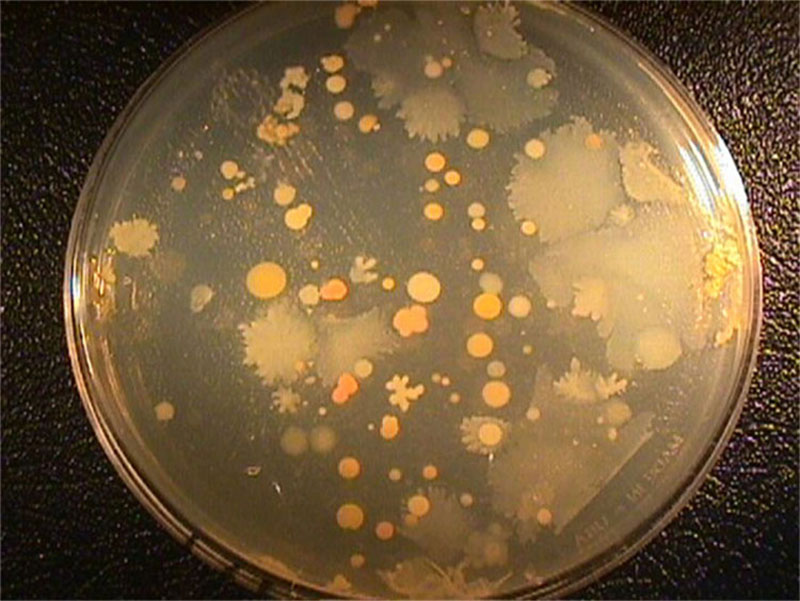What are marine microbes?
Marine microbes are tiny, single-celled organisms that live in the ocean and account for more than 98 percent of ocean biomass.

Marine bacteria growing on an agar plate. Image courtesy of Lophelia II 2012 Expedition, NOAA-OER/BOEM. Download image (jpg, 100 KB).
The term “marine microbe” covers a diversity of microorganisms, including Bacteria, Archaea, Eukaryota, and viruses. These organisms are exceedingly small—only 1/8000th the volume of a human cell and spanning about 1/100th the diameter of a human hair. Up to a million of them live in just one milliliter of seawater.
Despite being found everywhere on Earth—in your belly, dirt, the oceans—the diversity and distribution of microorganisms remain under-sampled and uncharted, especially in the deep sea.
We know that microbes are the Earth’s processing factories of biological, geological, and chemical (biogeochemical) interactions. Most marine microbes exist in highly organized and interactive communities that are versatile, complex, and difficult to analyze. They account for more than 98 percent of ocean biomass and possess as much variability as the environments they inhabit.
These organisms are capable of existing in practically any environment and garnering energy from a variety of sources, ranging from solar radiation to chemosynthesis. They play many different roles in the marine environment, from being the base of the food chain to controlling much of the flow of marine energy and nutrients and being essential to the ocean’s health.
Marine microbe communities can evolve rapidly in response to environmental shifts and could be used as indicators of ocean change. In fact, marine microbes can be “the canary in the coal mine” for the marine environment. In addition, they are also drivers of change in the ocean. Consequently, it is very important to acquire baseline information about these microorganisms against which future changes could be identified.